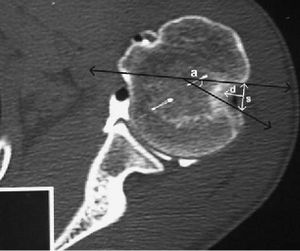Remplissage Procedure
Original Editor - User Name
Top Contributors - Shreya Pavaskar and Nupur Smit Shah
Description[edit | edit source]
Remplissage (a French term meaning “to fill in”) involves a posterior capsulodesis and infraspinatus tenodesis performed arthroscopically in patients with anterior shoulder instability and engaging Hill-Sachs lesions.
The Hill-Sachs remplissage technique is similar to an arthroscopic repair of a partial-thickness, articular surface rotator cuff tear. It consists of fixation of the infraspinatus tendon and posterior capsule to the abraded surface of the Hill-Sachs lesion. It is a non-anatomic technique that renders the defect extra-articular to prevent instability, using an arthroscopic posterior capsulodesis and infraspinatus tenodesis into the Hill-Sachs defect, performed in conjunction with a Bankart repair.
The filling of the abraded Hill-Sachs lesion effectively obliterates it and converts the lesion into an extra-articular one. Therefore it prevents engagement.
In particular, the concern that the remplissage would limit rotation did not materialize. There was no significant loss of motion in any plane after the procedure. [1]
Indication [2][edit | edit source]
Hill-Sachs defect >25 % in width, glenoid bone loss, <20 %, a more horizontal orientation/Hill-Sachs angle or engagement demonstrated during dynamic arthroscopic evaluation and a Hill-Sachs defect ending medial to the glenoid tract
Procedure[edit | edit source]
There are various adaptations of this procedure. Here is one video about it -
Advantages [3][edit | edit source]
| Easier control of ROM without possible damage to previously reconstructed anterior-inferior capsulolabral structures |
| Better visualization and easier reconstruction of the anterior-inferior capsulolabral structures because the humeral head moves more posteriorly |
| Inserting the sutures from lateral to medial attaching the rotator cable, as well suturing in the horizontal plane, allows stronger fixation and avoids damage to the blood supply of the posterior capsule and infraspinatus tendon. |
Disadvantages [3][edit | edit source]
| Blind suturing during the remplissage procedure sometimes requires the surgeon to check the subacromial space. |
| In cases with a concomitant supraspinatus rupture, orientation and determination of the rotator cable structure can be difficult. |
References[edit | edit source]
- ↑ Morsy MG. Arthroscopic remplissage: Is it still an option?. EFORT Open Reviews. 2017 Dec 8;2(12):478-83.
- ↑ Purchase RJ, Wolf EM, Hobgood ER, Pollock ME, Smalley CC. Hill-Sachs “remplissage”: an arthroscopic solution for the engaging Hill-Sachs lesion. Arthroscopy: The Journal of Arthroscopic & Related Surgery. 2008 Jun 1;24(6):723-6.
- ↑ 3.0 3.1 Rahu M, Kartus JT, Põldoja E, Kolts I, Kask K. Hill-Sachs remplissage procedure based on posterosuperior capsulomuscular anatomy. Arthroscopy techniques. 2019 Jun 1;8(6):e623-7.







